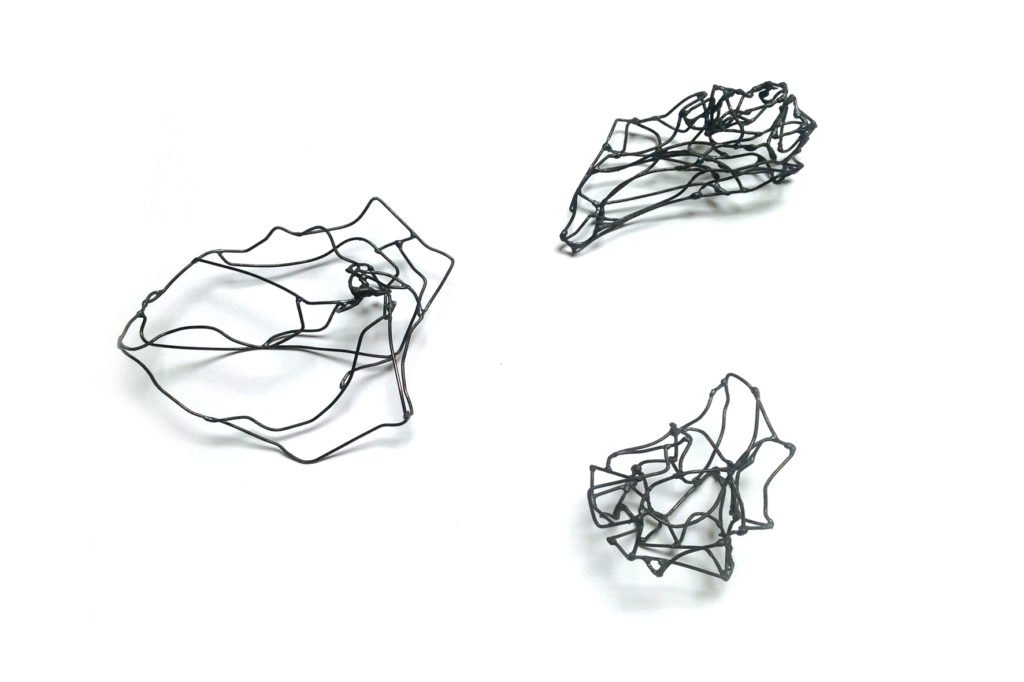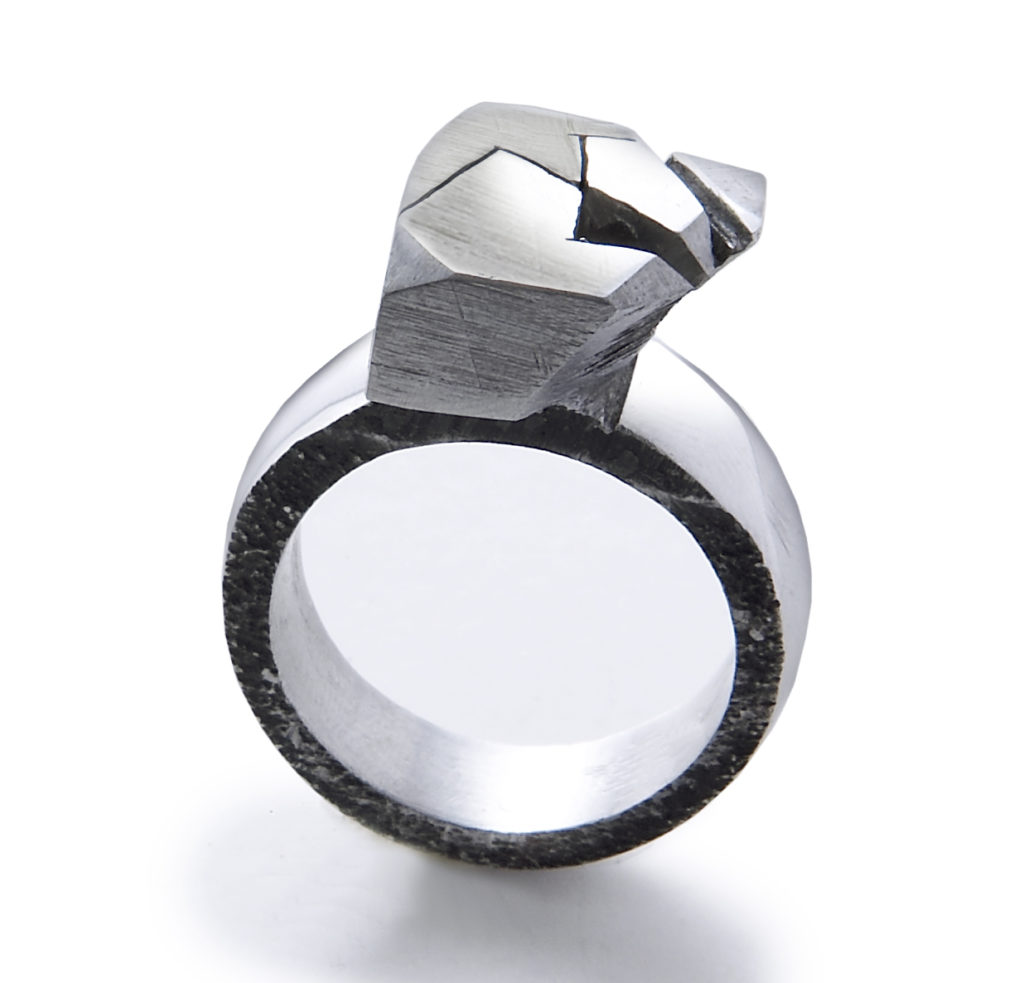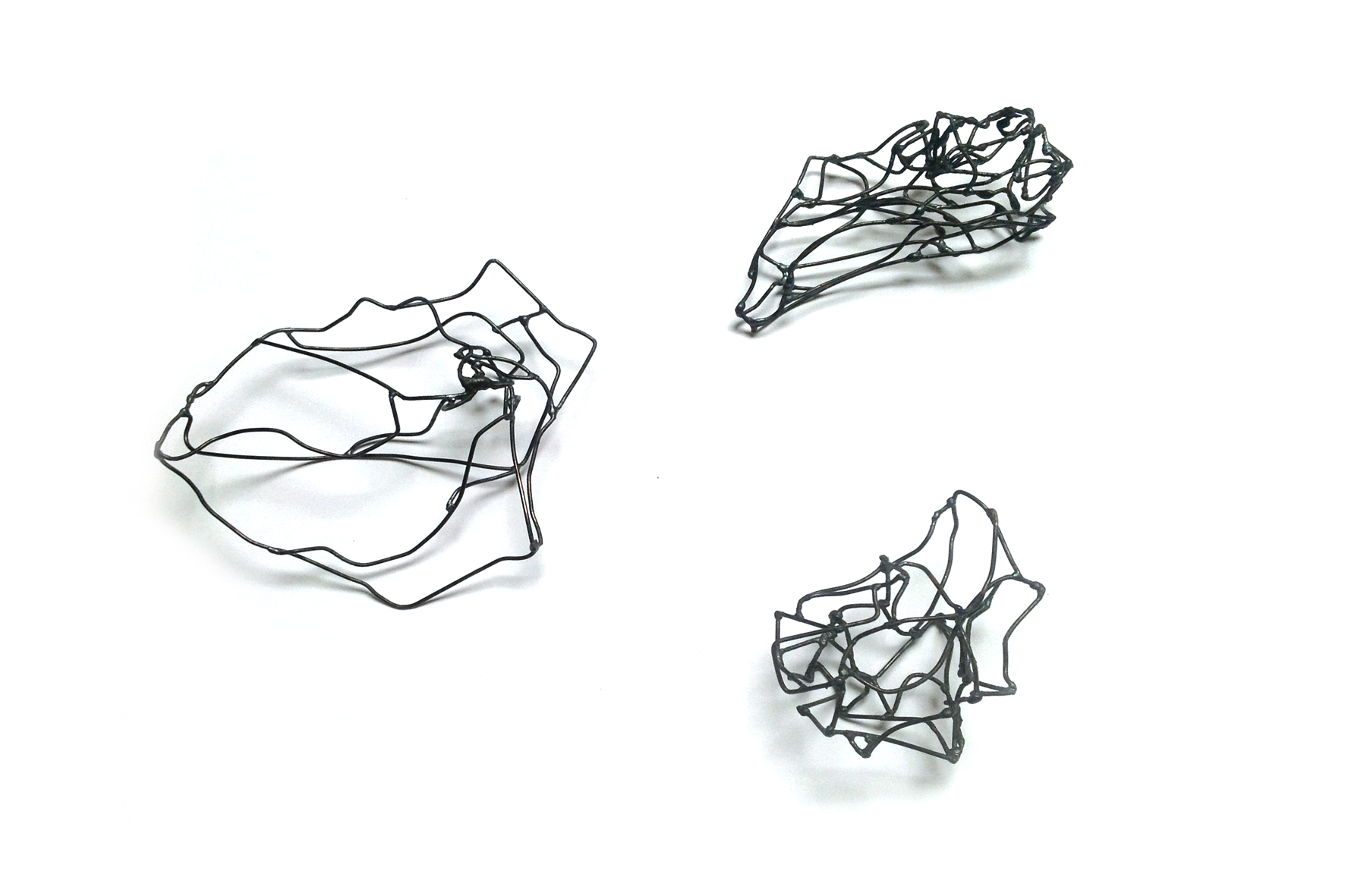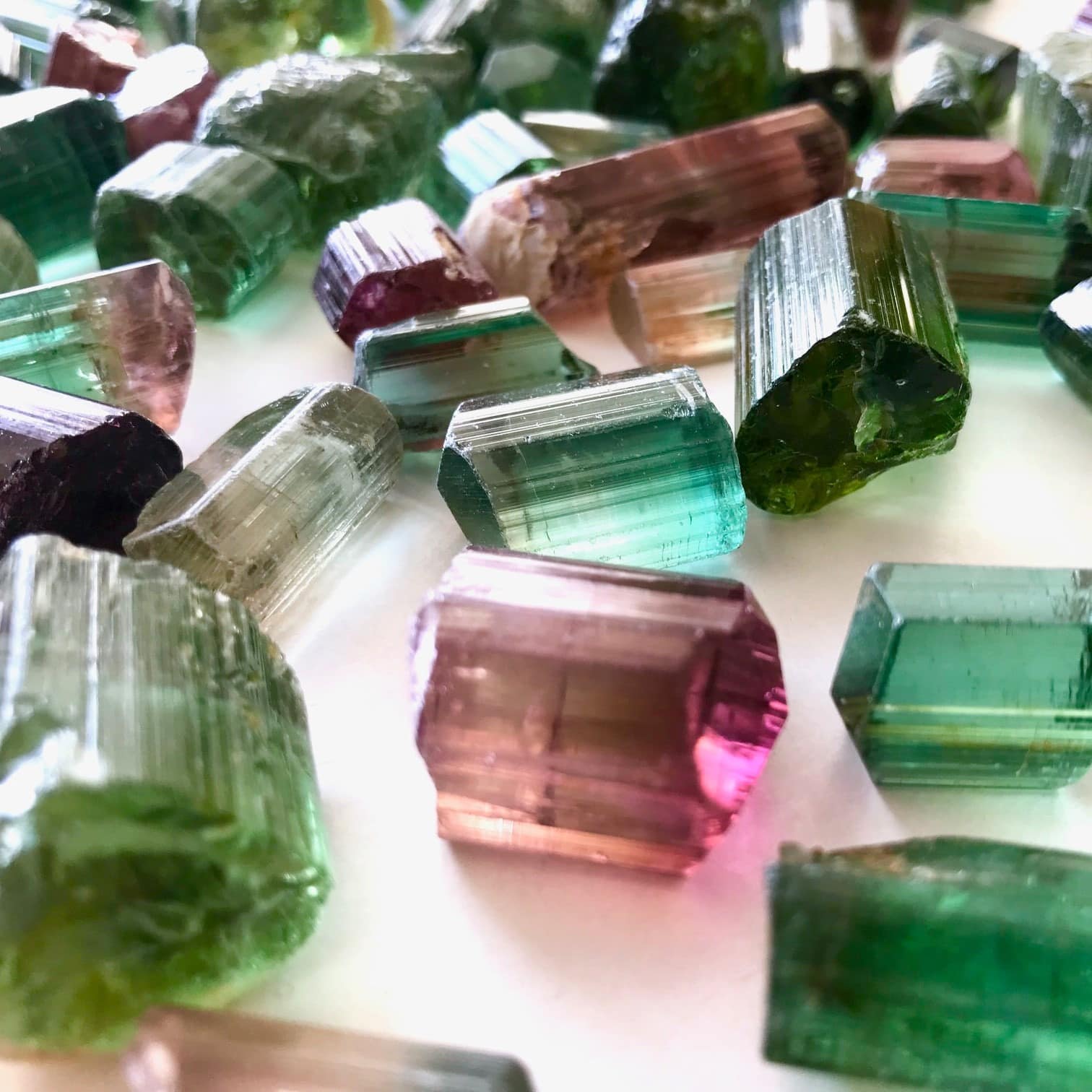For many years, my path regularly crossed that of Franck Massé when he was in charge of theAFEDAP in Paris. Whether it was at the school or at beautiful openings like those of the Mazlo Gallery, it was always a pleasure to talk with him about jewellery, its vocation and its evolution. I had wanted to interview him for a while, but our respective lives (like those of many other people) have been turned upside down by the period we have just gone through. It is now done and I hope you will take as much pleasure in reading this article and discovering her words as I did in asking her many questions and transcribing her rich, fascinating and relevant answers. On the programme, jewellery training, what is contemporary jewellery, how to train tomorrow’s generations, the history of AFEDAP and its heritage…

1- Could you introduce yourself to our readers?
Today as yesterday, I am still the same little boy who marvels at what he discovers and the people he meets. But officially, I am a sculptor, I belong to the Maison des Artistes and I am deeply attached to the notion of teaching because I have always liked to pass on my knowledge. I realise with time that it is an ability to listen to others. Sculptor-teacher, that defines me well.
2- What job did you want to do when you were a child ?
It made me smile when I discovered the questions. I wanted to be a geologist. In fact I didn’t really know what that meant but I always put stones in my pockets when I went for a walk and I had a passion for stones. What I found in the ground was, and still is, precious.
3- What was your training in relation to jewellery ?
I have always had an affinity with art and artistic practice. I was a student very much in reaction to the system. I did not find myself in education as it was conceived. I was soon taken out of school from secondary school. I went on a trip around the world and took my baccalaureate as an independent candidate. I found understanding with the art teachers who were the only ones who allowed me to come to their classes when I was no longer at school. I then tried competitive examinations in different art schools and life allowed me to enter the applied arts at Olivier de Serre. At the time, the entrance exam lasted a week and I had the chance to follow what was then called a “mise à niveau” which covered all the disciplines that were taught at the school. It was an exciting and intellectually stimulating time. You have to understand that I didn’t really know why I wanted to enter this school. I didn’t have a definite life plan at the time. And the encounter with the different workshops, the different practices allowed me to experiment to try to define myself better. I blossomed fully in this multidisciplinary approach, with the possibility of making ceramics and working in a wide variety of fields. And I was soon speechless in front of the molten metal during a visit to the metal workshop which was then run by Serge Mouille. He taught me how to weld and tame this metal. It was a decisive encounter.
I was lucky, if you can call it that, to be in all the training reforms. Also, the school quickly told us that we had to decide because the diploma was changing. So I joined the “surfaces and volumes” course, which suited me at the beginning but which was beginning to lack the possibility of experimenting with things. We fought to continue to have access to the workshops and to be less mono-centred on one practice. These are debates that are still very much alive. Then my second year arrived and it remained a common core. I asked myself many questions about what I wanted to do. As luck would have it, my teacher in the metal workshop, Serge, launched a new training programme that was completely new. At the time, he and other teachers were setting up what was to be called the Diplôme des Métiers d’Art (DMA) and I was part of the very first class from which I graduated in 1988. He had imposed many innovations in the training, but one of the most striking was that the teachers of general subjects had to come and give their classes in the workshops. There were five of us students and both our approach and theirs were completely changed by not teaching in a basic classroom. The aim was not to reproduce techniques but to summon them up according to our wishes. Experimentation was everywhere. I went looking for my resources, I asked the teachers for specific questions, I confronted specialities that allowed me to give substance to my projects.

4- You have been the director of the Association pour la Formation Et le Développement des Arts Plastiques (AFEDAP) for a long time, how did the project to create a school with a real creative and contemporary opening come about?
Following this DMA, with two of my fellow students, we bought some equipment and set up a workshop. From meeting to meeting, I met an architect’s studio and we grew with them while looking for a bigger place in which to develop professionally. I stayed in that place for 15 years. I worked on sculpture projects and also with associations around social inclusion. Among others, an association of teachers in the La Nacelle district of Corbeil-Essonnes which had launched the open school project. So we ran workshops on designing musical instruments and costumes for street performances.
Quite quickly, I started teaching when I replaced one of my former teachers in the school on rue Jules César (Paris) which was part of the BJO and which was only for adults. I was then exposed to pedagogy, course design and transmission. Some students wanted to move towards a real workshop practice, but the premises were not adapted and the dialogue was complicated with the more traditional teachers who worked at the CFA on the rue du Louvre. Little by little, a rather crazy idea was born: that of creating our own structure. I co-founded an association to do modelling, sculpture and live models. Once a month, we organised a work and research session which invariably ended with a dinner to remake the world and exchange on our universes. The idea of AFEDAP grew out of these discussions. And with my colleague Jean-Jacques Victor, we decided to create the school of our dreams. We looked for an area that could accommodate this project and we found it in the 19th district. The birth and installation of the school was a very intense period, we worked almost day and night. It was quite incredible. We started very small and we built with the people who trusted us. Our teachers were all craftsmen, artists and they even outnumbered the students. With one goal, to allow the students to learn and develop their ideas in the direction they wanted to take their work. The school never operated with a vertical vision. It was very innovative at the time.
5- AFEDAP has often been compared to La Escola Massana? I think that’s quite a compliment. Do you agree with this vision of what the AFEDAP school was?
When AFEDAP was created, I didn’t know La Massana. But I soon discovered people who taught there, such as Ramon Puig Cuyas. Comparisons are always complicated to make in reality. But La Massana, for a Frenchman, is the symbol of openness. Because it is far from the French model of apprenticeship, where you already learn a trade without necessarily putting creativity into it. This is the primary vocation of apprenticeship, which serves to provide a trade and the know-how that goes with it. Except that learning a trade, in my opinion, means drawing on objects, on the people who made them, on the things that inspired them. So this comparison is of course gratifying. Later, I met Ramon several times, in Minorca among other places, where there was a symposium around a fair called Euro Bijou. Several times we sent students from the school there to present their pieces. I think it is important to understand that what we wanted to do was to facilitate meetings. With a precise objective, that people should be happy to be there and to learn together while respecting their differences and their worlds.

6- In my opinion, a jewellery school should never close. Why did you take this decision?
The AFEDAP adventure lasted 26 years. So there were technical reasons linked to the building. But what made us stop was above all the evolution of apprenticeships. We were increasingly asked to do short courses and leisure apprenticeships. This was not the vocation of the school. The increase in competition in the training sector was also a factor. And the general context, the attacks in Paris, the decrease in foreign students, particularly from Asia, did not help us. However, this confrontation of cultures was one of the pillars of the school. And then there was a certain amount of personal exhaustion because the energy to carry the school forward was enormous. And finally, the successive reforms of training, the arrival of the datadoc, the complexity between the different organisations and players in the financing of training which added complications for students who wanted to have training financed and who were refused for administrative reasons. We wanted to continue to provide a real quality of teaching and we decided to close but to support the last generation of AFEDAP students as we had always done.
7- What is the future of AFEDAP and its ambition?
Administratively, the association no longer exists since 2020. AFEDAP continues to exist through its graduates, but other things may arise from this closure.
8- How do you see the future of the jewellery profession?
In my opinion, it is a rather incredible period for the students who have access to many techniques and also to an opening of the profession which is finally very new. I think that the arrival of girls in the workshops has also profoundly changed the nature of this profession with the contribution of a different sensitivity. I have witnessed this change, which I consider more than beneficial. I have the feeling that what will make the difference is more the framework in which we learn and practice than the transmission of the gesture. I also think that there will be even more transversality (between the crafts). Being a ceramic jeweller or a glass jeweller is now normal. The accumulation of skills is also symptomatic of this period of upheaval. With the prospect of inventing new practices in the service of objects.
9- What is the place of contemporary jewellery today? How should it be defined?
Just saying the word is a polemic. Between the vision of marketing and that of the creators, we get as many definitions as visions of this so-called contemporary jewellery. In reality, this jewellery is in fact at the frontier of many practices: art, design, craftsmanship… etc. While taking into account that these different practices are also looking for each other. Because an art craftsman is already an assembly that many people do not understand: the mixture of the craftsman and the artist. Also, contemporary jewellery is also searching. At the AFEDAP, we defined the term “author’s jewellery” with a vocation to come under the Maison des Artistes rather than the Chambre des Métiers. The approach taken by Ateliers d’Art de France is interesting with its idea of a single status for “artisan authors”, i.e. people who sometimes do production, subcontracting and who also have an artistic activity. Because you can be a technician and an artist, or an artist but also a technician. The one cannot go without the other, but it can also lead to collaborations. Because there is technical intelligence and artistic intelligence. More particularly in jewellery where a creation is often the sum of many skills and many people. But we must not rank, we must work together. The solutions can come as much from the raw technique as from the way of approaching things.
10- How do you see the jewellery industry evolving? How should teachers conceive their profession in the coming years?
There is no global definition of a teacher’s job. You have to love what you teach and know what you are talking about. But one of the things that seems to me to be the most important is to work on mistakes because they are formative and valuable in many ways. Working on the error, on the process that didn’t work, also means looking at how to make it work. What didn’t work for one person may work for another. Why, how, there is an imponderable part in this. Also, it is necessary to note and rely on the error to invent new processes. This also allows you to acquire a critical mind and to develop your vision of things and techniques.
11- What advice would you give to young people who want to enter this sector?
Jewellery has existed for as long as mankind has existed. There is no reason why it should stop. If you want to go there, go ahead, meet people, try things and techniques, look for materials and, above all, express yourself!
See you soon!







